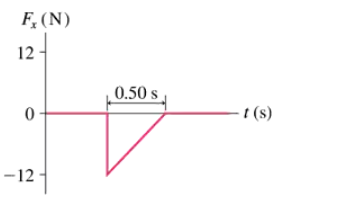(II) The force on a bullet along the barrel of a firearm is given by the formula F = [740 - (2.3 x 105 s-1) t] N over the time interval t = 0 to t = 3.0 x 10-3 s. Determine the impulse by integration.
<Image>

 Verified step by step guidance
Verified step by step guidance Verified video answer for a similar problem:
Verified video answer for a similar problem:



 5:28m
5:28mMaster Impulse with Variable Forces with a bite sized video explanation from Patrick
Start learning